Abstract
The uptake of orthophosphate (32P) by excised corn roots, Zea mays L. was studied using roots grown on 0.2 mm CaSO4. Nine concentrations of KH2PO4 from 1 to 256 μm were used at temperatures of 20°, 30°, and 40°. Enzyme kinetic analysis was applied to the data obtained. Two apparent mechanisms (sites) of phosphate uptake were observed, 1 dominating at high P concentrations and 1 at low P concentrations. A Km of 1.36 × 10−4 and a Vmax of 177 × 10−9 moles per gram of roots per hour at 30° was calculated for the mechanism dominating at high P concentrations. Similar calculations gave a Km of 6.09 × 10−6 and a Vmax of 162 × 10−9 moles per gram of roots per hour at 30° for the mechanism dominating at low P concentrations. The Q10 for both mechanisms was approximately 2. Calculation of thermodynamic values from the data gave ΔF of − 5200 cal, ΔH of − 950 to − 1400 cal, and a enthalpy of activation (A) of 10,300 to 13,800 cal per mole for the mechanism dominating at high P concentrations. Similar calculations from the data for the mechanism dominating at low P concentrations gave a ΔF of − 7300 cal, ΔH of − 10,700 to − 8200 cal, and a A of 9300 to 18,900 cal per mole. If the dual mechanism interpretation of this kind of data adequately describes this system, then both mechanisms of P absorption by corn roots involve chemical reactions.
Full text
PDF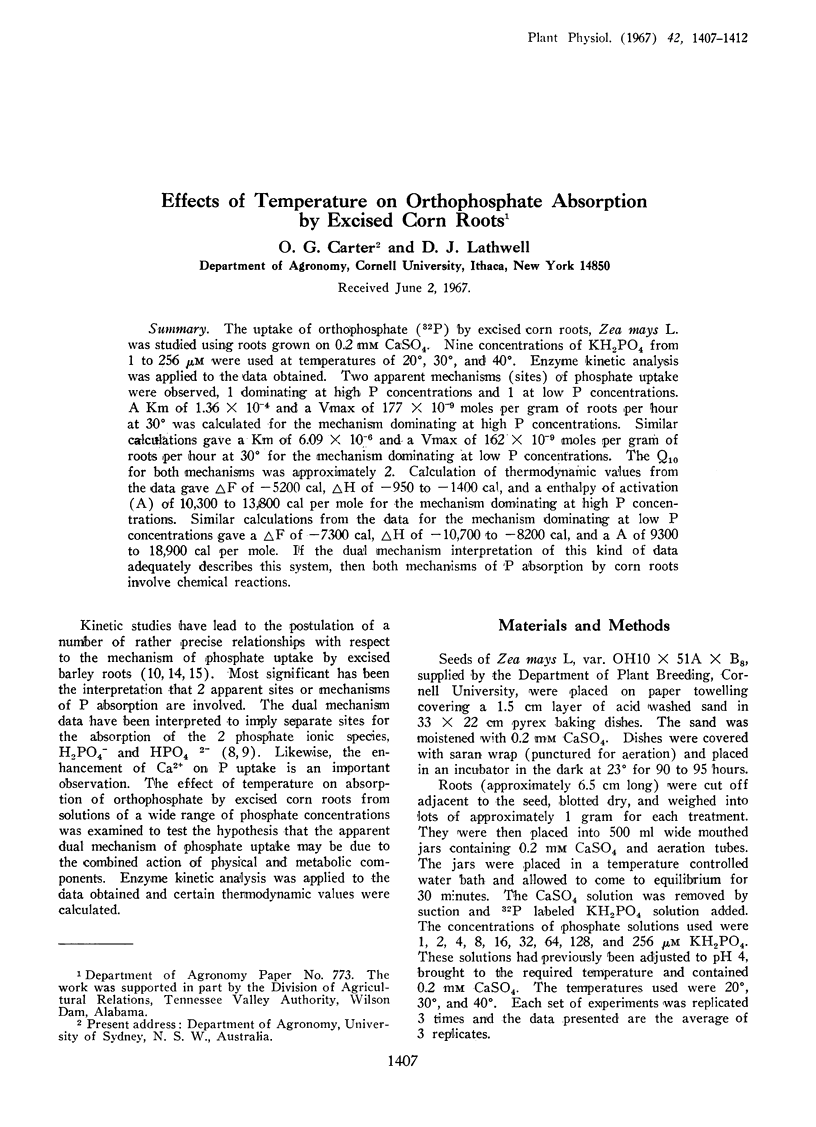
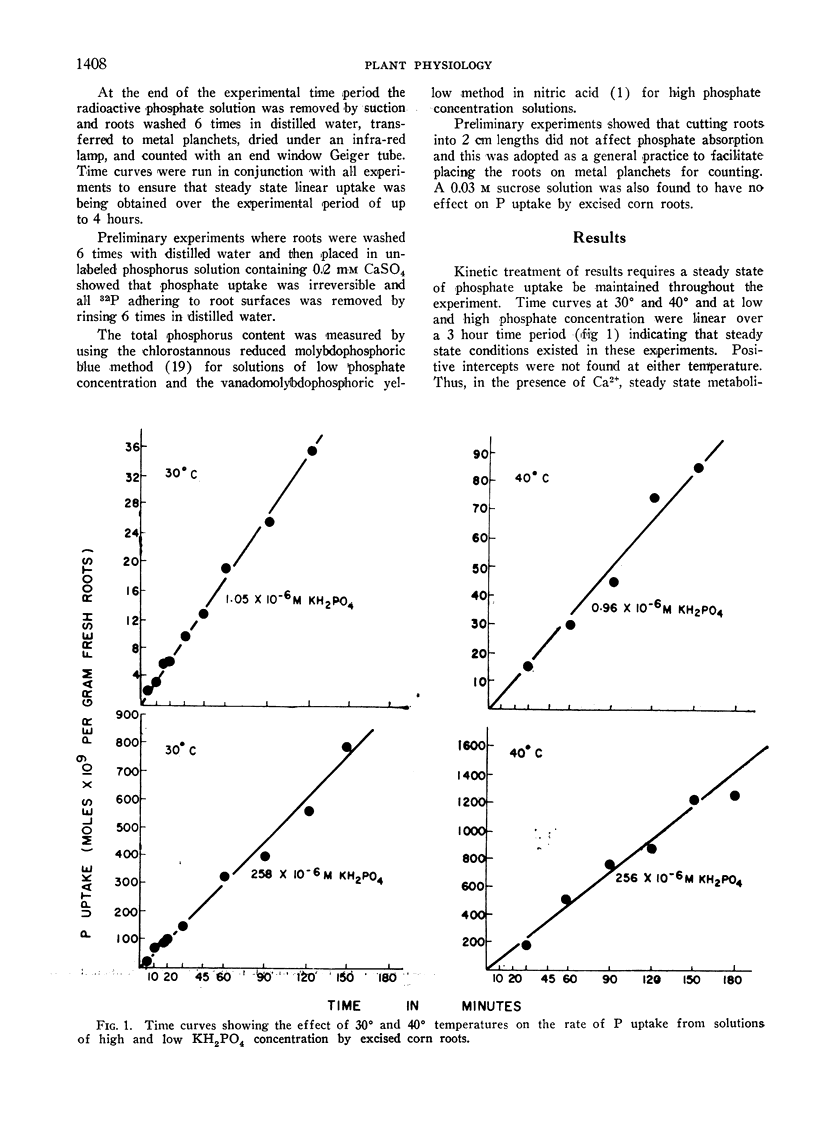
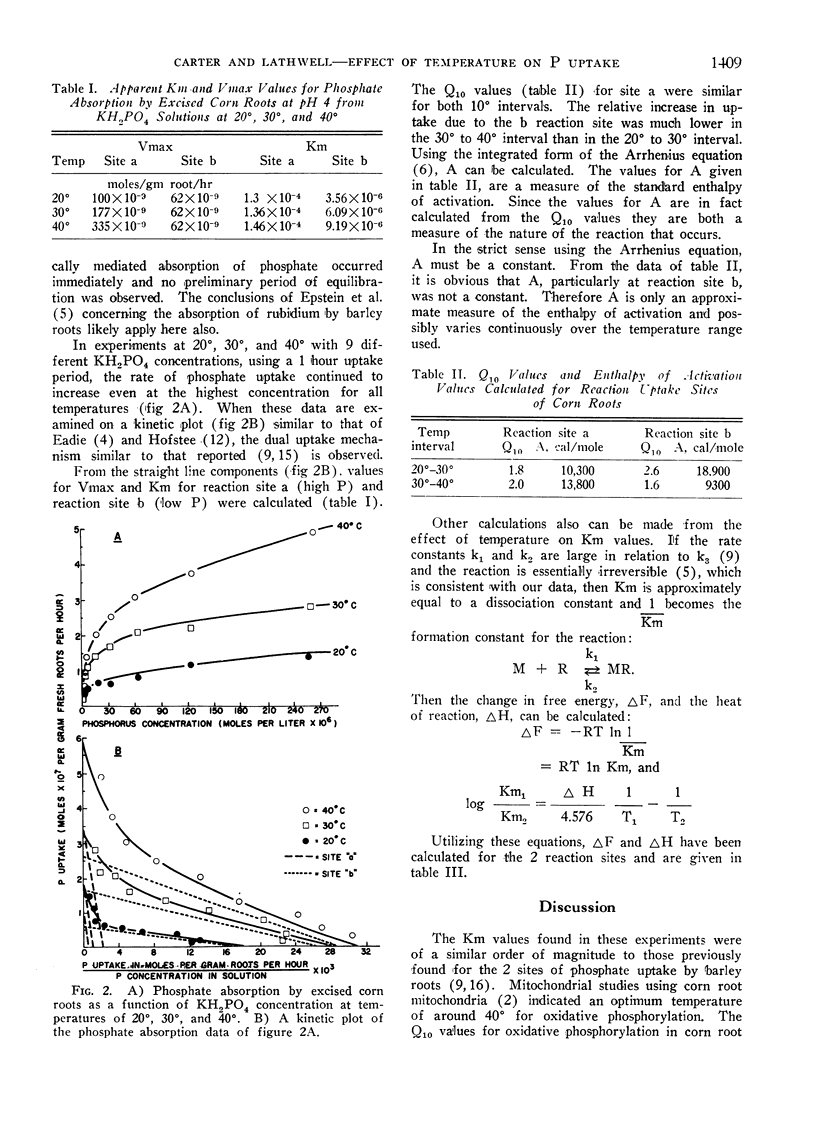
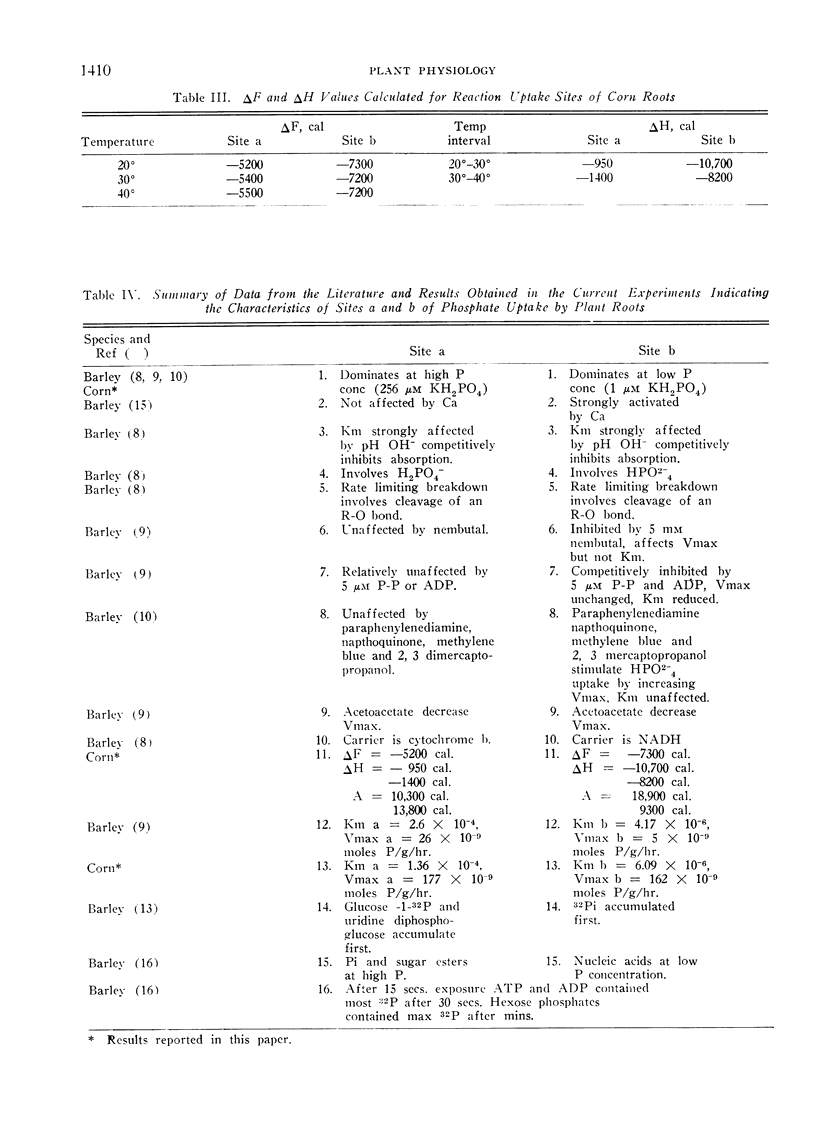
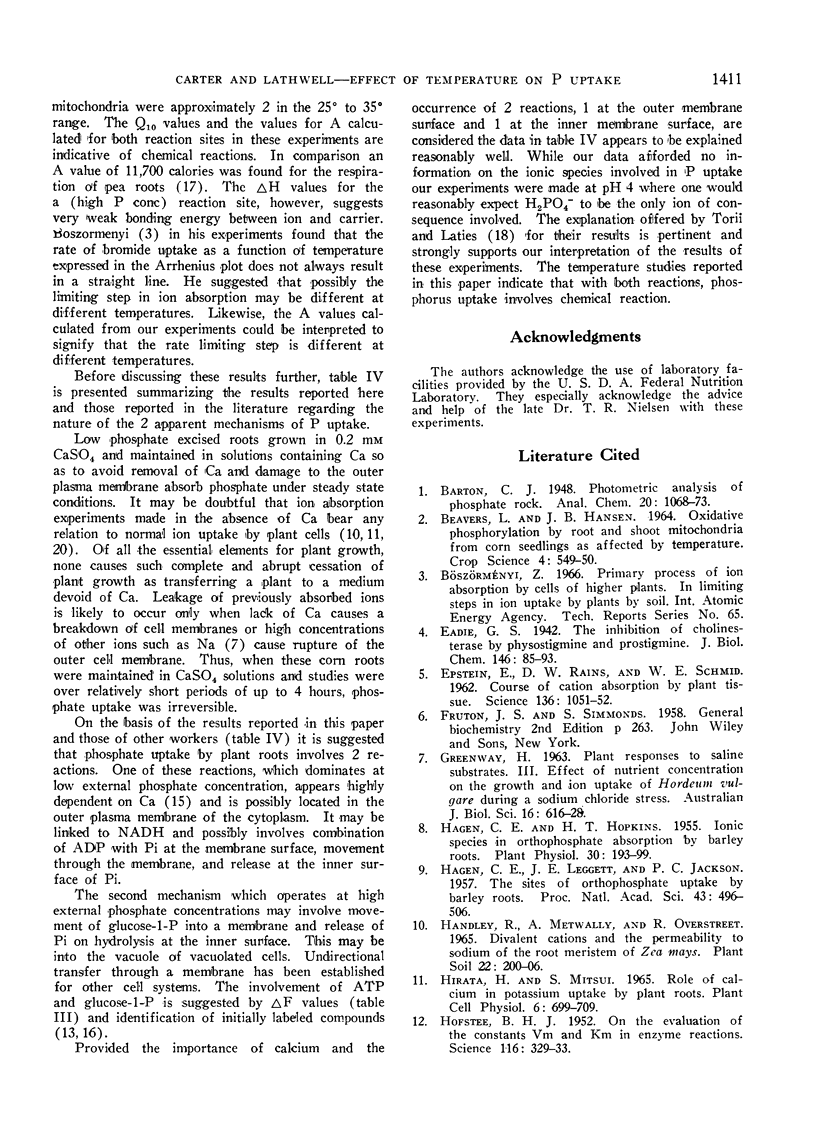

Selected References
These references are in PubMed. This may not be the complete list of references from this article.
- Epstein E., Rains D. W., Schmid W. E. Course of Cation Absorption by Plant Tissue. Science. 1962 Jun 22;136(3521):1051–1052. doi: 10.1126/science.136.3521.1051. [DOI] [PubMed] [Google Scholar]
- HOFSTEE B. H. J. On the evaluation of the constants Vm and KM in enzyme reactions. Science. 1952 Sep 26;116(3013):329–331. doi: 10.1126/science.116.3013.329. [DOI] [PubMed] [Google Scholar]
- Hagen C. E., Hopkins H. T. Ionic Species in Orthophosphate Absorption by Barley Roots. Plant Physiol. 1955 May;30(3):193–199. doi: 10.1104/pp.30.3.193. [DOI] [PMC free article] [PubMed] [Google Scholar]
- Hagen C. E., Leggett J. E., Jackson P. C. THE SITES OF ORTHOPHOSPHATE UPTAKE BY BARLEY ROOTS. Proc Natl Acad Sci U S A. 1957 Jun 15;43(6):496–506. doi: 10.1073/pnas.43.6.496. [DOI] [PMC free article] [PubMed] [Google Scholar]
- Leggett J. E., Galloway R. A., Gauch H. G. Calcium Activation of Orthophosphate Absorption by Barley Roots. Plant Physiol. 1965 Sep;40(5):897–902. doi: 10.1104/pp.40.5.897. [DOI] [PMC free article] [PubMed] [Google Scholar]
- Torii K., Laties G. G. Dual mechanisms of ion uptake in relation to vacuolation in corn roots. Plant Physiol. 1966 May;41(5):863–870. doi: 10.1104/pp.41.5.863. [DOI] [PMC free article] [PubMed] [Google Scholar]


